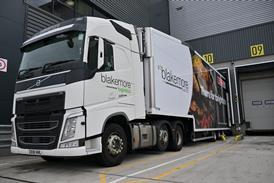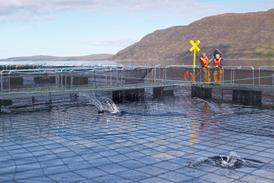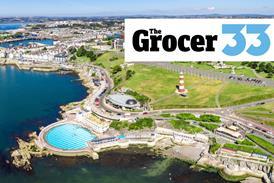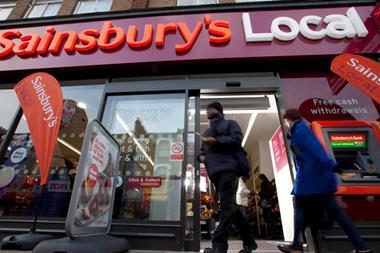Yet although the battery market as a whole is worth more than £450m per annum and grew 4% this year in volume, value fell 2% [TNS Impulse, year to July 23 2001].
What's gone wrong?
Rayovac's European marketing manager Raj Mathur blames price deflation on an increase in the level of offer activity.
"Over the last 12 months, price promotions have become an increasingly common phenomenon in all grocery categories and this is particularly evident within high margin sectors such as batteries.
"We have also seen a proliferation of price promotions driven largely by the multiples. The last nine months have seen the leading premium brands offer aggressive promotions Duracell with three-for-the-price-of-two offers and Energizer with buy-one-get-one-free the first time Energizer has been so aggressive in the market."
Batteries have always been an attractive sector for retailers, with the traditionally high margins offering plenty of scope for price cuts.
The battery market continues to be fragmented in terms of distribution: multiples have by far the largest share with 37.1%, with Tesco out in front with 11.3%, but the rest of the market is spread across various grocery and non-grocery areas [TNS Impulse].
"The average independent retailer buys Duracell batteries at £1.75 and sells them at £3.99," says Cegasa UK's international area manager Roberto Perea. "The retailer has always made the majority of the profit when selling batteries, despite claims to the contrary."
But there are dangers in deep price cuts. "While these promotions are great for the consumer," says Raj Mathur, "they can have a severe impact on cash margins and dent the category profitability."
In most cases, the key to avoiding disaster seems to be to maintain balance between a competitive standard price position and promotional activity. "The emphasis needs to be on presentation and a multi-location program reflecting the impulse purchase nature of the category rather than on price only," says Mathur.
Suren Raymond, senior marketing manager at Duracell, agrees. "The sector is quite competitive at the moment. The battery category needs support it's worth investing in display units to let the consumer know this is a key category, and the public needs to be educated via advertising."
Award-winning campaigns like Duracell's much-lauded puppy promotion undoubtedly help raise the profile of batteries as a category. But what else can manufacturers do to persuade consumers to spend more on their goods?
"The best way to grow the category in value is to provide better products," says Raymond.
With technological innovation pulling away at the premium end of the market, most manufacturers are going for a segmented approach to battery marketing. Alkaline batteries now have 82.7% of the market, up from 77.2% last year, with zinc carbon's share down 4% to 10.7%, although other types are down 1.5% to 6.6% [TNS Impulse year to July 23 2001].
"Consumers are now buying alkaline increasingly for high drain appliances," agrees Varta's md John Dickinson, "and they require the latest high drain battery recipes."
Innovation within the category is increasingly focused on longer-lasting batteries for appliances from children's hi-tech toys to CD Walkmans.
"People are spending a lot of money on mobile appliances," says Raymond. "If you're going on holiday and you've spent a lot of money on a player that's barely any bigger than a CD, the last thing you want to do is lug around a carrier bag full of batteries. You want a battery that's going to last through your holiday."
Confidence in the battery's performance is also important to consumers. "The newer high drain appliances need high constant power," adds TDK's marketing executive Neil Berry. "Whereas the batteries in an old tape Walkman would wear down gradually, a digital appliance will cut out immediately without warning when the batteries get too low."
Every manufacturer in the marketplace has produced a range of batteries suitable for this kind of application. Market leader Duracell has its Ultra M3 range, which it claims is the most powerful alkaline battery in the world and which includes a photo lithium version in response to the increased power demands of the new generation of flash and digital cameras.
Number 2 brand Energizer has its E2 titanium range and third-place brand Panasonic has the PowerMax3 range, which claims to have improved on the performance of its power alkaline range by some 93%.
Other manufacturers such as Varta, with its Maxitech range, TDK with its X-treme Plus and Sony Energy with its Stamina Power Plus, are anxious to make their own inroads into this premium end of the market.
Most manufacturers have formed a detailed picture of what Energizer calls the "super premium consumer" the clued-up early adopter who owns an array of hi-tech devices.
"These consumers tend to be the people who buy special premium products in other categories," says Energizer's marketing manager for UK and Ireland, David Cautley.
"The people who buy CD Walkmans or minidisc players, or who are interested in digital photography. Some people just buy ice cream others insist on Häagen-Dazs.
"It's the Häagen-Dazs consumer we're targeting here."
It's not just a technological arms race, though innovation also has its place within the promotional arena. Although it does have its own high drain appliance solution in the shape of Stamina Power Plus, Sony Energy is preparing itself for a different kind of marketing onslaught on the category.
"We're aiming at doing what others don't," explains trade marketing manager Michael Cox-Hill. "We're aiming to become the second brand below Duracell that position is there for the taking. There's been a lot of investment from Sony Corporation in the battery sector it's not a whim."
As part of a much larger brand, Sony Energy is part of a wider initiative to get the Sony brand name before the public as often as other consumer mega-brands like McDonald's. "You can't do that with TVs," points out Cox-Hill, "but you can with batteries."
As befits its integrated philosophy, Sony is going for a wider "lifestyle" approach to selling batteries and appliances, with the accent on rechargeable battery technology. Although the new product range is strictly under wraps until early next year, Sony can reveal that it will include a new super high drain rechargeable battery charger, with new features including one-hour quick recharging, a raft of safety features and smart contemporary design.
Sony could have a competitor on that front TDK is also about to launch its NiMH (nickel metal hydride) rechargeable battery, which has increased power output and is free of the "memory effect" which has previously reduced efficiency in batteries of this kind.
This will be a boon for mobile phone users who will no longer have to wait for power to drain completely before recharging their phones.
High drain batteries and cutting-edge promotional campaigns aren't the whole story, however. There's a continuing demand for mid-range and value batteries for the kinds of applications we all still have powering our clocks, TV remotes, and torches.
In this area, there's some confusion as to whether the future is 100% alkaline or whether old-fashioned zinc carbon batteries still have a role to play.
"The battery purchaser gets such good value now from the standard alkaline product that there simply is no place left for zinc carbon," says Varta's John Dickinson. "Increasingly value alkaline is nudging the top end of zinc in terms of price."
Energizer's UK marketing manager David Cautley takes the opposite view. "To say zinc carbon is dead and buried is premature for some people it meets their consumer need perfectly, and it still has a very useful part to play as an entry level price point into the category."
TDK's Neil Berry agrees. "We would always advise consumers to buy zinc carbon for low drain appliances," he says. "There is no harm in putting an alkaline battery in something like a wall clock or a television remote control, but it would be a waste of money."
Own label products account for 21.2% of the market by volume, down from 25.2% last year [TNS Impulse].
Cegasa, own label leader in Europe, is to offer its new generation of batteries for high-drain appliances to own label ranges by the start of 2002.
"Nowadays, the main difference between brand makers and own label is the so-called marketing tax', which consists of advertising and promotional costs incurred by brand makers that are passed on to consumers in the form of higher prices at the shelf," says Cegasa international area manager Roberto Perea.
There is no real consensus on where the real long-term growth areas are, or where the battery category is heading next. Some manufacturers see the future in a greener battery technology.
TDK, in particular, stresses that its zinc, alkaline and lithium batteries are all 100% free of heavy metals such as mercury and cadmium, although almost all other manufacturers can now make the same claim.
The European Commission is proposing new legislation that would require the collection and recycling of all portable batteries, although it's unclear why this is such a priority. According to the British Battery Manufacturers' Association, batteries make up just 0.001% of domestic waste and there is no evidence that they impact the environment when incinerated or disposed of in landfill sites.
However, not everyone has the same faith in the rechargeable segment, which is still really in its commercial infancy. "People have been saying rechargeables were the future for the past 15 or 20 years," says Duracell's Suren Raymond.
Other manufacturers like Varta are putting their trust in leading edge technological developments in specialised areas like miniaturised button cells, while TDK is looking towards the healthy AAA size segment and lithium batteries designed specifically for camera technology.
Major players like Energizer are focusing on improving their relationship with the consumer rather than on any specific segment of the battery market.
"I think what's important is the ability of suppliers to engage with the consumer," says marketing manager David Cautley, "and encourage upweighted purchase via multipacks.
"Batteries are often something which drop off the bottom of the shopping list. We need to prompt secondary purchase, get batteries into those appliances which otherwise might have sat at the bottom of the cupboard, empty."
Rayovac has a similar philosophy, putting its marketing muscle behind innovative packaging ideas such as the resealable tub, which also encourages higher volume purchase.
Holding on to consumers and building brand loyalty in an industry traditionally dependent on distress purchase will be key for the industry in the months ahead.
"The problem is that most consumers tend to purchase dependent on retailer range, price perception or simply what is available to them," points out Cegasa's Roberto Perea.
Making batteries into a lifestyle choice rather than a boring necessity through imaginative marketing strategies and promotions may be the only way for manufacturers to squeeze more value out of the category.
{{FOCUS SPECIALS }}
Close menu
- Home
- Retail & Wholesale
-
Products & Suppliers
- Back to parent navigation item
- Products & Suppliers
-
Product Categories:
- Back to parent navigation item
- Product Categories:
- Alcoholic drinks
- Bakery
- Cereals & breakfast
- Cheese
- Chicken & poultry
- Chocolate
- Confectionery
- Crisps, nuts & snacks
- Dairy
- Fish
- Fresh produce
- Frozen
- Household
- Meat
- Own Label
- Sauces & condiments
- Seasonal
- Soft drinks
- Vaping
- Vegan & plant-based
- World foods
- Suppliers
- People
- Reports & Data
-
Topics A-Z
- Back to parent navigation item
- Topics A-Z
-
Popular topics:
- Back to parent navigation item
- Popular topics:
- Cost of living crisis
- Crime
- Deposit Return Schemes
- Finance
- Government & Regulation
- Health
- Inflation
- Loyalty
- Marketing
- Mergers & Acquisitions
- New Product Development
- Sourcing
- Supply chain
- Sustainability & environment
- Technology
- Ultra Processed Foods
- Vaping
- A-Z all topics
- Content by type:
- Events
- Ask iA (beta)
- Subscribe now
Sign in to comment on this article
Not logged in before? Register for FREE guest access today.
You will be able to:
- Read more stories
- Receive daily newsletters
- Comment on stories
Advert















No comments yet